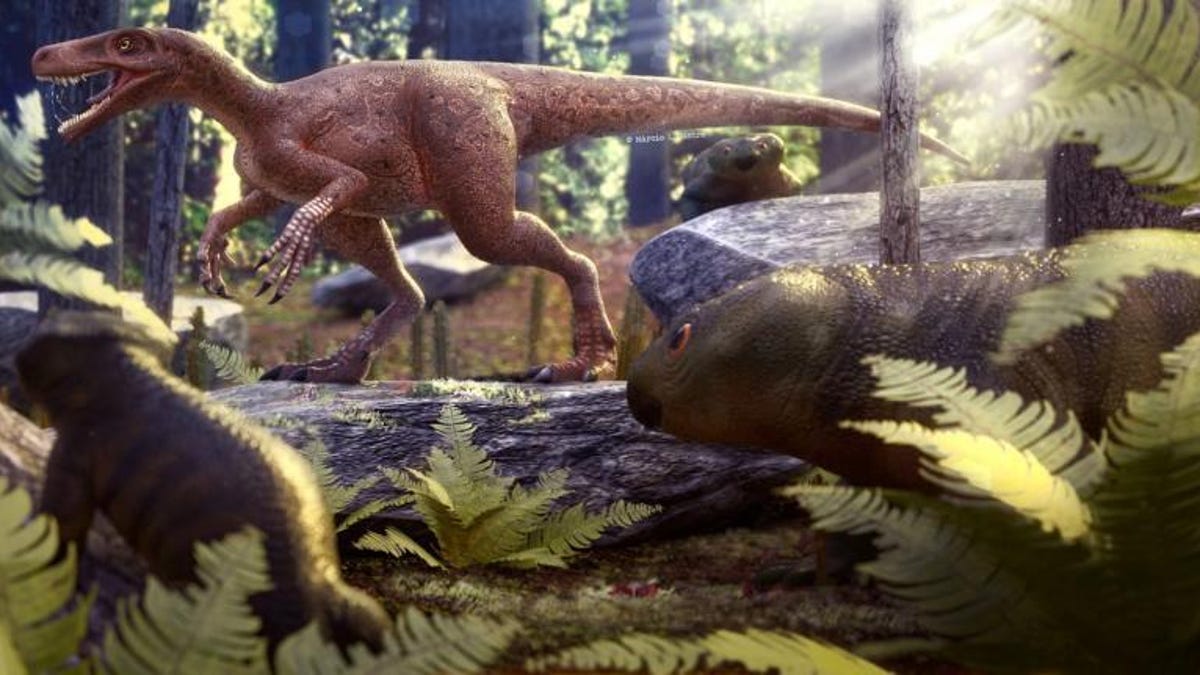Fossils of the oldest meat-eating dinosaur were just discovered in Brazil
The 230-million-year-old Mesozoic meat eater was small but ferocious.

Illustration of Gnathovorax cabreirai in life, along with fantosaurs, in a graphic recreation by paleoartist Márcio Castro.
Long before Tyrannosaurus rex stomped across the Earth, a 230-million-year-old Mesozoic meat eater was gnawing its way through the Triassic world. Nearly 10 feet long, the small but ferocious Gnathovorax cabreirai -- meaning "a jaw for devouring things" -- gnashed its sharp, serrated teeth and wielded long claws on fingers that helped capture prey long before any other known carnivore. Its story, based on pristine fossilized remains buried in Brazil, survived the times and was published last week in the scientific journal PeerJ.
So remarkably preserved was the dinosaur's skeleton that the researchers from Universidade Federal de Santa Maria and Universidade de São Paulo who unearthed it were able to reconstruct part of the animal's brain morphology and identify tell-tale predatory features.
The rock block with the fossil was discovered in 2014 in São João do Polêsine by paleontologist Sérgio Furtado Cabreira.
"Predatory dinosaurs were an important ecological component of terrestrial Mesozoic ecosystems. Though theropod dinosaurs carried this role during the Jurassic and Cretaceous Periods (and probably the post-Carnian portion of the Triassic), it is difficult to depict the Carnian scenario, due to the scarcity of fossils," the research team wrote in its study.
The researchers said the superb state of the skeleton and its completeness means the specimen sheds light into poorly understood aspects of an entire class of dinosaurs' anatomy and brains.
Read more: 150-million-year-old sea monster unearthed in once-tropical Poland

